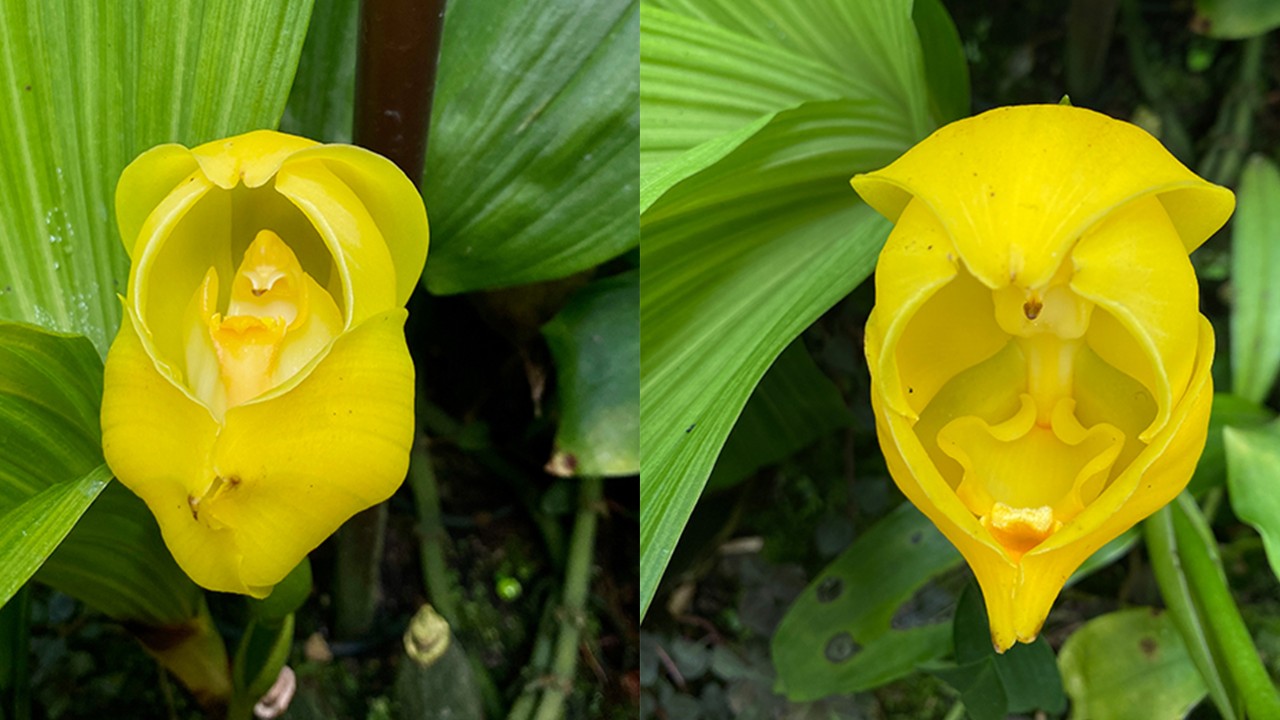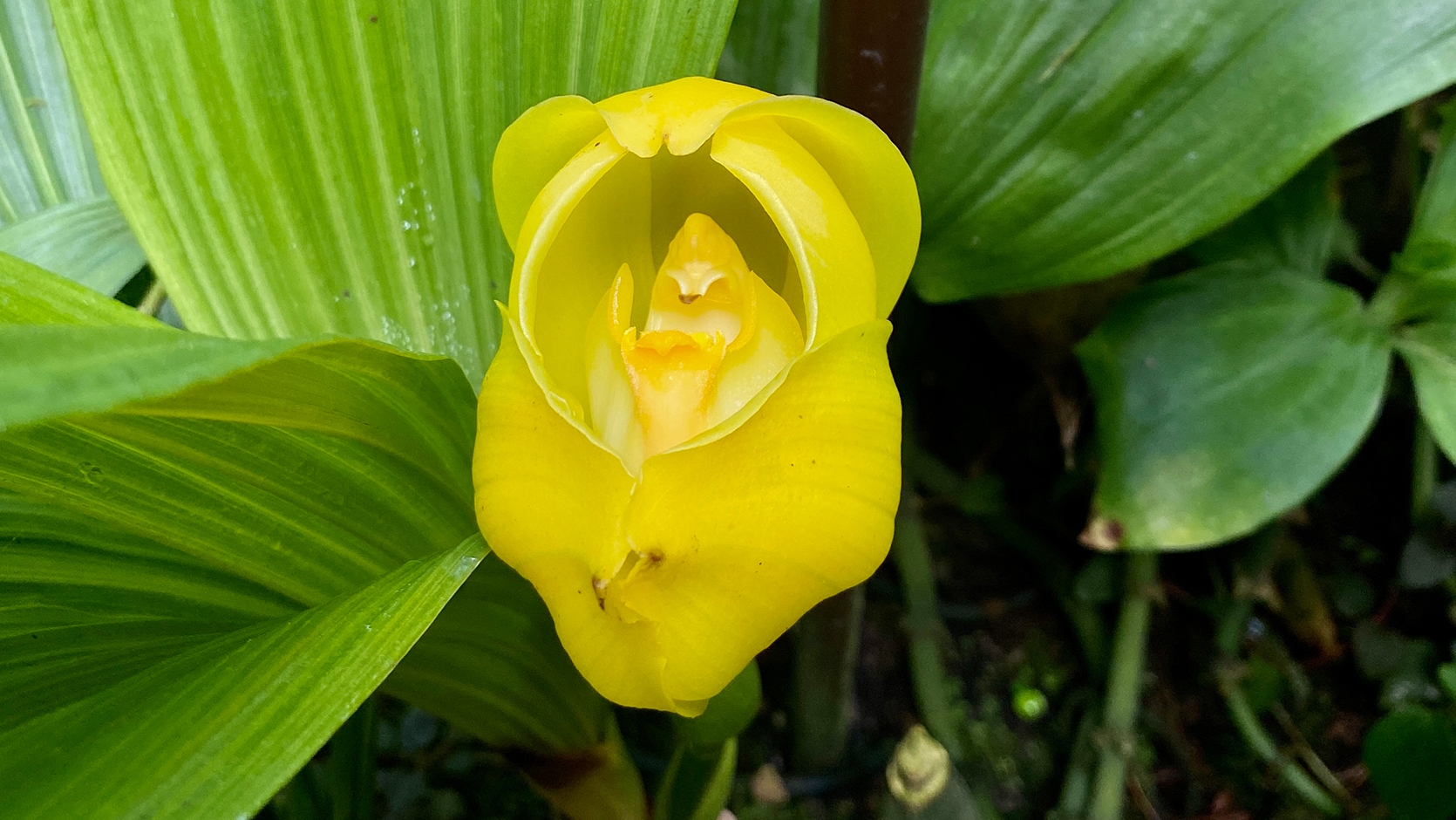Tulip Orchid (Anguloa clowesii)
 Spot this species while you’re at the Cloud Walk!
Spot this species while you’re at the Cloud Walk!
A terrestrial, cool-growing orchid, Anguloa clowesii is found in the mountains of Colombia and Venezuela at around 1,800m in elevation. It is colloquially called tulip orchid because of its cup-shaped flower and also, cradle orchid, as its lip petal (labellum) rocks back and forth when the flower moves.
 Close-up of Anguloa clowesii flower.
Close-up of Anguloa clowesii flower.
This species of Anguloa has solitary, yellow flowers that are goblet-shaped with boat-like lips. Gas chromatography shows the scent in Anguloa clowesii consists of more than 80% white, solid, organic compound (1,4 dimethoxybenzene) which has an intense sweet floral odour. The perception of scents is highly subjective, but Anguloa flowers are said to be strongly scented of medicinal and herbal odours , with Anguloa clowesii said to smell of cinnamon and wintergreen oil mixed together.
Male euglossine bees (tribe Euglossini) are attracted to the scent of Anguloa clowesii. The flower lip guides the scent-seeking bees to land and crawl into the narrow-opening of the flower. When the bee is set to depart, it releases the grip which leads the rocking lip to spring upwards in a position such that the sticky part of pollinia is glued to its thorax or abdomen. After struggling free, the bee visits another flower to complete pollination.
Anguloa shed their leaves when new growths are produced and leaf abscission exposes short spines on the pseudobulbs. These spines act like a basket, catching leaves, roots and sticks, which then decompose, releasing nutrients for the plant to take up.
The genus Anguloa only consists of nine species and four natural hybrids but undoubtedly there are more to be found!
Flowers of Anguloa clowesii last for about three weeks so be sure to catch them in bloom
soon, at the start of Tree Top Walk, in Cloud Forest!
Written by: Ziana Yacob, Manager (Research and Horticulture)
Ziana's fascination with the many wonders of plants led her to study Horticulture. She has been involved in propagating plants and nurturing our in-house orchid collections. Keeping plants alive is a challenge and she's constantly learning about what she should or shouldn't be doing!


/1000x1000-thumb-whatsblooming_crescentia_cujete_Image01.jpg)
/1000x1000-thumb--peters-eulophia-2.png)
